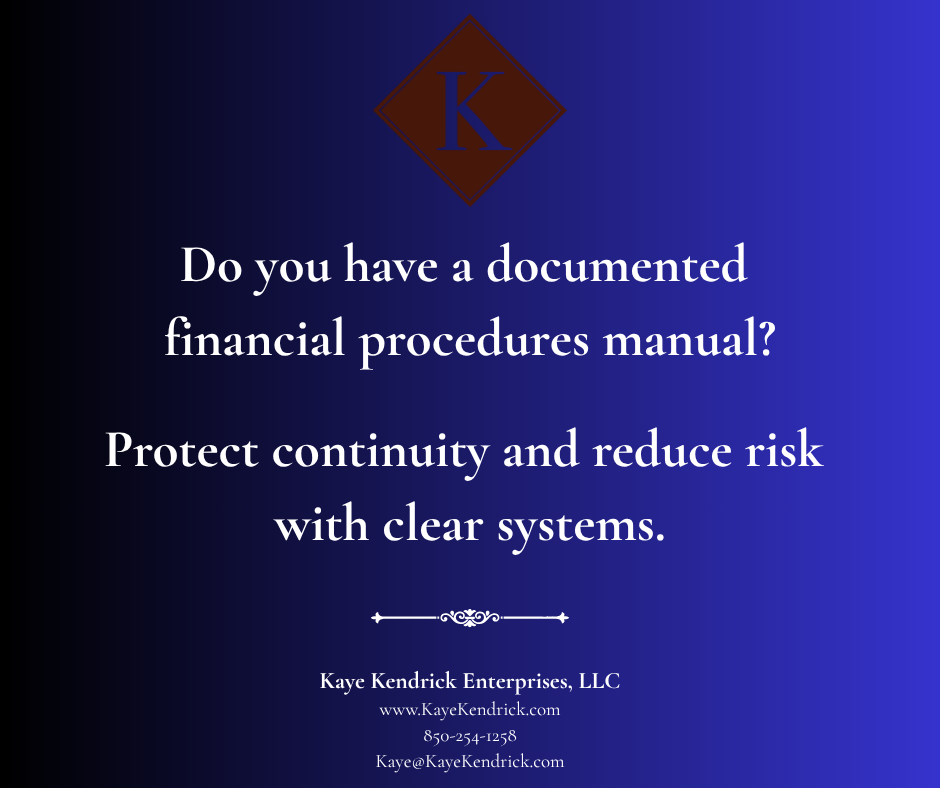Why Every Business Needs a Documented Financial Procedures Manual
In the day-to-day demands of running a business, few tools are as essential—yet as frequently overlooked—as a documented financial procedures manual. Many organizations rely on the memory and experience of long-term staff or informal routines passed along verbally. While this may work temporarily, the absence of clear written systems exposes the business to unnecessary risk, inefficiency, and confusion. A well-prepared manual provides stability, clarity, and long-term protection.
Ensuring Continuity
When key personnel take leave, retire, or transition out of the company, undocumented processes can create costly disruptions. A financial procedures manual safeguards business continuity by capturing how essential tasks are performed—from invoice approvals and payroll processing to expense reimbursements and monthly reconciliations. This documentation allows new or temporary staff to step in quickly, maintain accuracy, and keep operations running smoothly. Continuity depends on knowledge being institutionalized, not merely remembered.
Reducing Risk and Strengthening Controls
Internal controls are only as strong as their execution. Without formalized procedures, businesses are more vulnerable to errors, fraud, and compliance issues. A properly designed manual establishes checks and balances: who performs each task, what approvals are required, and how records are maintained. These written controls promote transparency, strengthen accountability, and ensure that financial processes align with both regulatory standards and management expectations.
Increasing Efficiency and Clarity
Ambiguity in financial workflows often results in delays, duplicate efforts, and frustration. A comprehensive manual serves as a clear reference point for everyone involved in the organization’s financial operations, ensuring that all employees follow consistent, approved methods. Over time, this uniformity improves accuracy, speeds up audits, and supports timely, data-driven decision-making. When everyone knows exactly how things are done, productivity rises and costly miscommunication decreases.
A Living Document
A financial procedures manual should never be static. As a business grows, new systems, technologies, and compliance requirements emerge. Periodic reviews—ideally conducted annually or after significant structural changes—help keep the manual current and practical. Treating it as a “living document” allows the organization to adapt while preserving its internal consistency and control.
Partnering for Peace of Mind
Creating or updating a financial procedures manual can seem like a large undertaking, but the rewards far outweigh the effort. The process itself often uncovers inefficiencies and strengthens internal awareness of financial responsibilities. At Kaye Kendrick Enterprises, LLC, we work with organizations to develop structured, user-friendly manuals that reflect real-world operations while meeting best-practice standards.
A well-crafted financial procedures manual is more than documentation—it is an investment in clarity, security, and long-term organizational health. It protects your business from disruption, supports growth, and provides leadership with the confidence that every process is being handled the right way, every time.


